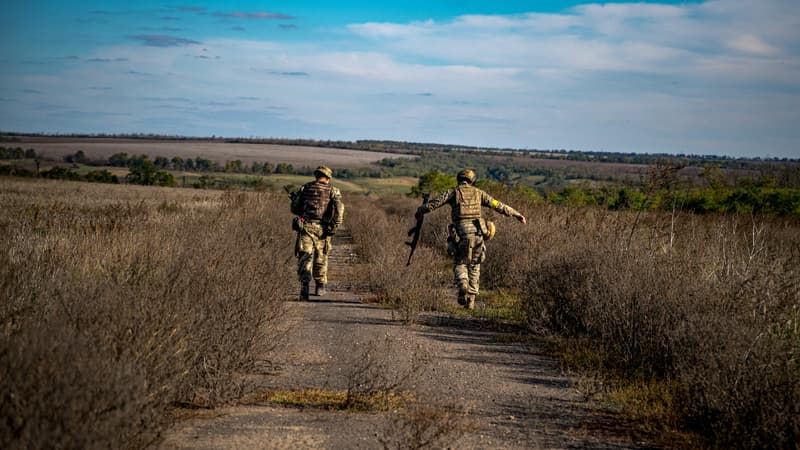“I was ordered not to comment, we will not talk about the counteroffensive,” a Ukrainian soldier told a BFMTV reporter in the Kherson region. For a week, in fact, there has been little information from Ukraine about the counteroffensive that Kyiv is leading against Russian troops in the east of the country.
The maps that mark the evolution of the troops on the ground “do not change due to lack of confirmed information” and this for “6th consecutive day”, military historian Cédric Mas noted last Friday on Twitter. Only “the clues and bits of information suggest that the front is moving.”
“Ukrainian military officials offered a limited view of the situation on the front lines,” the Institute for War Studies also noted on Thursday.
Information “that could be exploited by the adversary”
“The Ukrainian command wants to give a minimum of information” about its positions, explains General Jérôme Pellistrandi, defense consultant for BFMTV, “it reduces the open sources that could be exploited by the adversary.”
We call this radio silence “operational security,” declares Colonel Michel Goya, also a defense consultant for BFMTV, “we block all information in a given area.” A task that can be complicated, since “for example, all soldiers have to be managed with their phones” so that they do not say anything to their loved ones, “anything that could reveal information.”
“In the Kherson area, therefore, things are moving, but the Ukrainians are completely blacked out,” this is how Cédric Mas wrote last week, then emphasizes that “pro-Russian maps show setbacks, especially in the Ischenka – Starytsya sector.” To follow the conflict in some places, it is necessary to take Russian information.
“The bad side” of this method is “that it leaves the field of communication open to the enemy”, underlines Michel Goya.
“An Information War”
Because the conflict between Ukraine and Russia is also “an information war”, recalls General Pellistrandi. The two countries mainly give information that puts them in their favor, “it is propaganda and counterpropaganda.” Thus, the Ukrainian authorities broke their silence on Friday by claiming to have taken 88 towns from Russian forces in the Kherson region.
But if the figure of 88 seems important, “they are above all villages, towns that have been taken over”, explains Jérôme Pellistrandi. The important thing is above all to highlight the successes, “they exploit their victories in communication,” says Michel Goya.
The decrease in the circulation of information also makes it possible to limit the images of Ukrainian soldiers wounded, dead or fighting, or even of a possible withdrawal of the Ukrainian army, which avoids tarnishing the image of the counteroffensive in public opinion, both national and international. .
Giving good news from the front “is giving moral support to the families, to the soldiers, it contributes to confidence,” underlines Colonel Michel Goya.
Source: BFM TV


